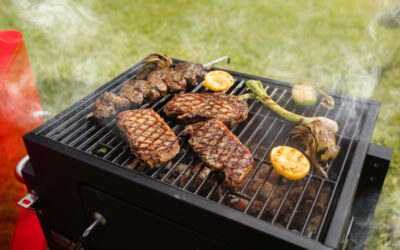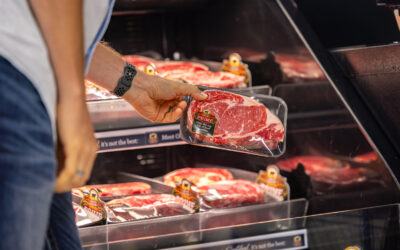
A Drop of Hope, A Heap of Hard Work
New Mexico family’s recipe for ranching earns the CAB Sustainability Award.
By Kylee Kohls Sellnow
Manny and Corina Encinias start each day together with two hours of prayer, devotions and mass.
“From 5:00 a.m. to 7:00 a.m., we are in faith mode,” Manny says. “When you ranch, you have to rely on faith to get you through the challenging times and truly understand the blessings you do have.”
By 7:00 a.m., the entire family is up and working.
Ranging from 22 to 2 years old, Marley, Bella, Mia, Ellie, Carly, Rio and Zia bring distinctive personalities and interests to the family dynamic. Even if they don’t all end up on the land, their parents hope the ranch upbringing makes them more compassionate and empathetic.
For Manny and Corina Encinias’ family of nine, sustainability runs deep. They are stewards of a legacy, working the land dating back to 1777, when the first generation began herding sheep in the nearby Moriarty community. Today they focus on cows well suited to the harsh New Mexico desert, fostering community strength and creating opportunities for others to follow in their footsteps.
“My ranching philosophy is adapting to the ever-changing environmental and marketing climates,” Manny says.
Their holistic approach earned the Encinias family and their Buffalo Creek Ranch the 2022 Certified Angus Beef Sustainability Award.
Restoring the Land
Manny brought his wife to view their current ranch in 2016.
All she saw was the mountain of work it would take if they bought the choked and rundown property with its three-bedroom house for their growing family of seven.
Still, she trusted Manny’s vision to restore the land and help it flourish.
“The first part of sustainability is consideration for the natural resources,” he says. “In the desert Southwest, those are fragile, yet resilient.”
Dormant grasses, the sound of a creek bed crunching beneath boots and a lone, dry cottonwood point to the tenacity life requires in this part of the world. Named for the creek that typically runs through its heart, Buffalo Creek Ranch relies on water from a closed basin and monsoon season — something they haven’t seen in years, to nourish its native grasses.
“We’re living on one month of rain last year in August,” Manny says, noting no significant precipitation since.
“Our gold in this country is water. And it’s what keeps me up at night. Water will always be of concern, for myself and future generations, because it is so precious. I don’t believe people recognize it as a fragile resource in everyday living here in the United States.”
Beyond the rain gauge, Manny looks to wildlife in his pastures as a measure of ecosystem health.
“We know that when we start seeing multiple species of wildlife in our pastures, we’re managing appropriately,” Manny explains. “It’s just like managing rangelands. When you can manage the grasses for multiple species, instead of just one predominant species, their presence is indicators that our management is in sync with the environment.”
They depend on the cow herd to cultivate the brittle native grasses. Each step activates roots for deeper growth and creates divots for water to pool when the rain does come. Cattle are part of his plan to restore the land, taking care to only stock as many as the acreage can maintain.
In 2021, the family responded to persistent and extreme drought by downsizing to 90 of their best Angus-influenced cows. They stock at only 30% today – one cow for every 40 to 100 acres depending on the pasture.
Their genetic goals are multifaceted. Key considerations include Angus cattle that can adapt to the unforgiving environment yet achieve carcass merit and qualify for the Certified Angus Beef ® brand. For cows to stay they must be easy fleshing, structurally sound with maternal instincts that can handle the 7,300-foot elevation. The ones still thriving are a testament to an Angus cow that can meet consumer demand for high quality in a way that works for both the caretakers and a rugged landscape.

The 98%
“The consumer drives a lot of what we do,” Manny says. “We have embraced that as a responsibility. I think it’s important to have a seat at the table with the 98% not directly involved in agriculture, not only as beef consumers but as policy makers.”
He considers transparency in varied platforms part of his responsibility to the industry.
Foodservice salespeople and chefs are welcomed to the ranch as part of Certified Angus Beef Ranch Days. He patiently explains the effect of the water-saving night irrigation that limits evaporation and the importance of rotational grazing, sharing things all in a day’s work for the Encinias crew. These moments serve as eye-opening experiences for people selling, serving and enjoying the beef that comes as a product of their toil.
His work goes beyond simply opening the ranch gate. Consistent improvement and communication of their ranching principles is fueled through further education and industry programs.
“I think Beef Quality Assurance as a program has evolved to really take in a lot more of the important consumer-based issues like animal welfare,” he shares.
As a former BQA trainer and extension agent, it’s not about box-checking or catering to media noise.
“I think we can all lend ourselves to becoming better—better handlers of animals and our environments by just evaluating our systems through the Beef Quality Assurance principles,” he shares.

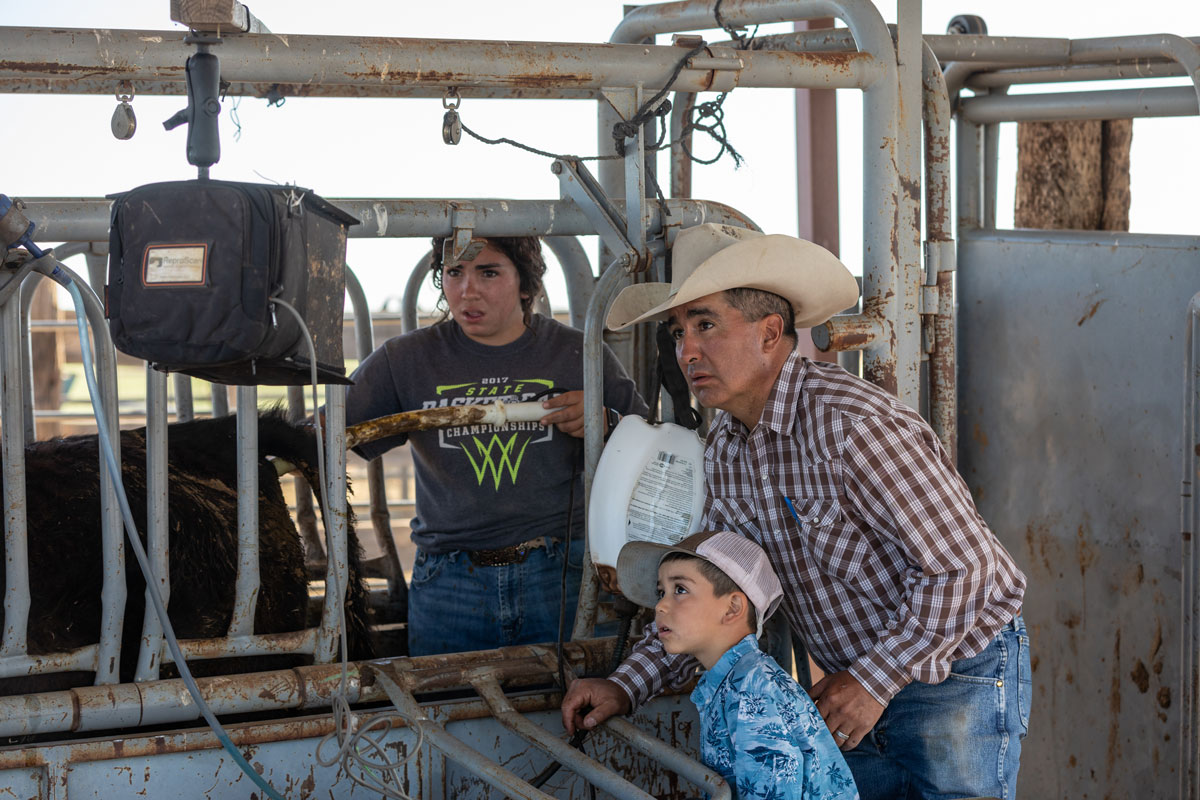
Being a Good Neighbor
Manny teaches courses in animal science and business at Mason Lands Community College. Experiences consulting on ranches from Hawaii to North Dakota fuel his teachings. In the between hours, he also serves as a translator for Mexican veterinarians looking for experience at U.S. feedyards and dairies.
“Instead of just performance or profitability, it’s trying to be the kind of ranch you’d want to live next to if you weren’t in production agriculture,” Manny says. “This just expresses who we are, who we’ve always been, who we were when we first arrived here in this region. And it’s really being a good neighbor, caring for each other.”
He’s a man who walks the talk.
Manny can often be found on the phone, talking cattle marketing or management as a trusted advisor to Indian nations across the Southwest.
Under his guidance, tribal stockmen developed confidence in Angus genetics, data and producers. As a result, the cattle move on to commercial feedyards with greater performance and grade opportunities, many qualifying for CAB.
“Over the last 20 years, these cattlemen have sought out elite Angus seedstock genetics from Texas to Montana,” Manny says. “Today, if you were to go and look at the cattle, you would never believe they originate from Indian country. The quality is there.”
That’s the Encinias specialty: Finding ranch profit opportunities from raising quality beef for consumers.
“If you focus on both the environment and that 98%, you can put yourself in a unique profit opportunity,” Manny says.
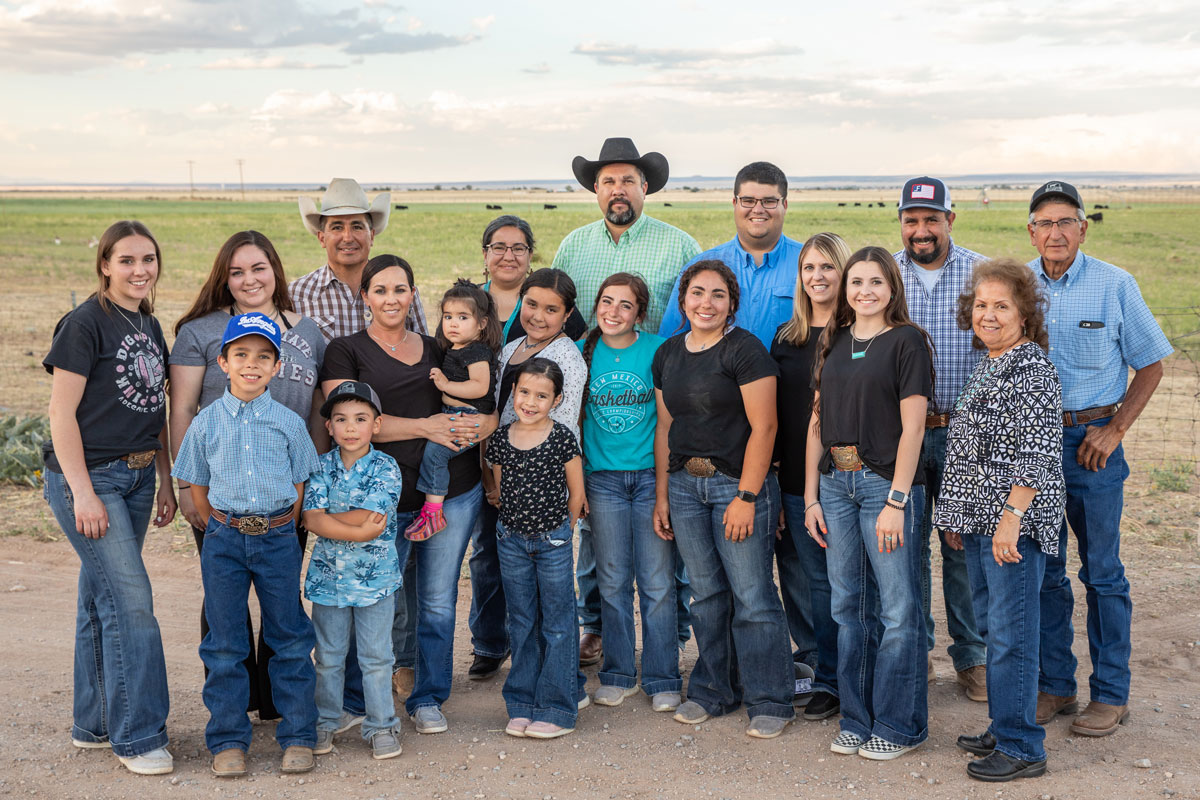
Three generations of Encinias live in the Moriarty, New Mexico area, all involved in agriculture.
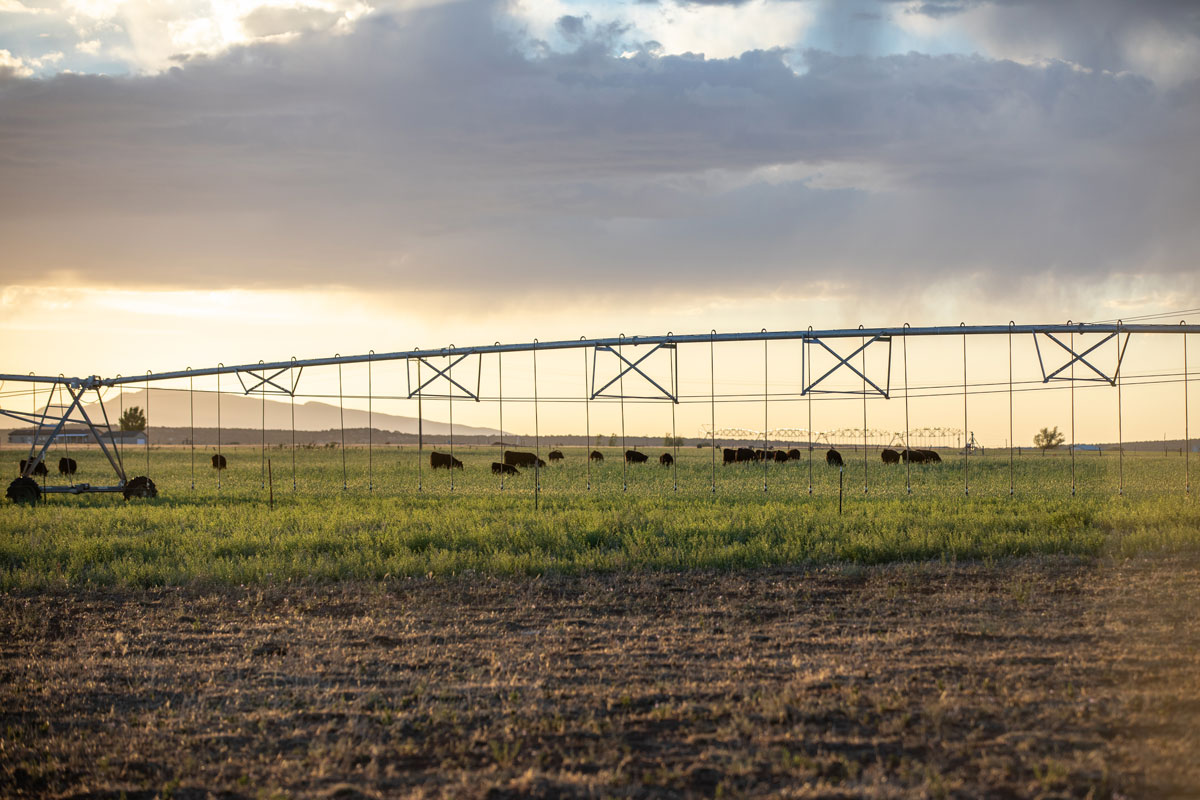
Faith in the Future
The long hours of work and service are driven by a mighty purpose.
“My goal is to secure the land we’ve invested in and a future in agriculture for our kids,” Manny says.
Daughter Mia has been Manny’s shadow for the last 20 years.
Now, her little brother is Mia’s sidekick on the ranch.
At preschool graduation, Rio’s announcement that he wants to be a rancher took the family by surprise – no one had ever asked him before. The spirited 5-year-old’s is already adopting Dad’s vision as his own.
Mia’s dream is to come back to the ranch after her animal science degree at West Texas A&M University.
“I grew up riding around New Mexico with my dad, meeting different people and ranchers,” Mia shares. “Bouncing along with him in the truck, I fell in love with ranching.”
She watches and learns from her dad, from fixing water tanks to breeding decisions to preg-checking cows.
“We have a growing world to feed,” she says. “I want to do my part in figuring out how we can raise cattle better and more consistent beef through high-quality genetics.”
Producing beef in the desert Southwest is a way of life that requires a certain resolve, found in each member of the Encinias family. They know to realize their vision will take patience, hard work and a steadfast faith.
“When we work together as a family, it’s amazing to see our kids learn to love this ranch and start to see what Manny did from the beginning,” Corina says. “If you do the work, you can provide something greater than you imagined.”
For now, they will keep praying for rain.
Story originally published in the Angus Journal.
You May Also Like…
Progress, Not Complacency
Beef demand has been exceptional because of dramatic increases in consumer satisfaction for a few decades. Since taste ranks at the top of the list when it comes to what drives consumers to choose beef, we know where our figurative “bread is buttered.”
Cutout and Quality Strong
Summer weather has begun to set in with more regions of the country set to experience hotter temperatures. This means the traditional turning of consumer focus toward hamburgers and hot dogs rather than steaks, the spring favorite.
CAB Sets Sales Records, Sees Historically High Brand Acceptance Rates
In an otherwise tough time in the beef business, sales and supply records have been a bright spot. The positive numbers mean that quality beef production has not let up, and beef demand is holding. Consumers have proven the value proposition: the good stuff is worth a little more money, for a better eating experience.

